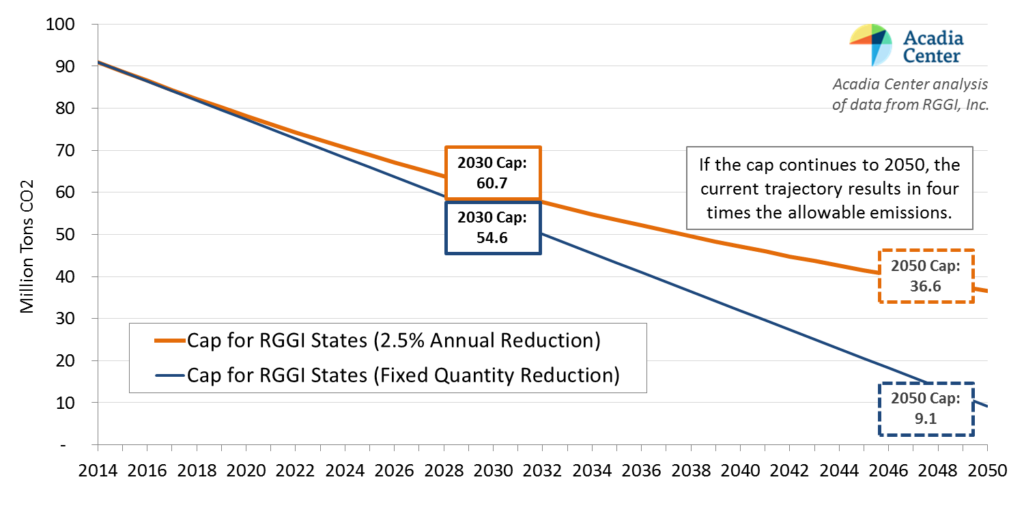Principles to Strengthen the RGGI Program
The Regional Greenhouse Gas Initiative (RGGI)—a market-based program developed to reduce CO2 emissions from the power sector—has been a success through its first six years of operation. Since the program began in 2009, the nine participating states have seen electricity prices fall while harmful emissions from the power sector have been reduced. Revenue from emission allowance auctions has been reinvested in programs that help consumers make energy efficiency improvements in their homes and save on energy costs. RGGI’s success shows the ability of market-based approaches to deliver cost-effective emissions reductions, and demonstrates how states can work together to develop sound energy policies.
Ahead of the upcoming 2016 RGGI Program Review process, Acadia Center and 31 other environmental groups and clean energy businesses have produced a set of joint principles to strengthen the program and enable the RGGI states to comply with U.S. EPA’s Clean Power Plan which requires reductions in power plant carbon emissions nation-wide (30 percent below 2005 levels by 2030). The following reforms to RGGI are needed to meet these requirements and improve the program going forward.
1) Extend the RGGI Cap
The RGGI cap currently extends to 2020, while EPA’s Clean Power Plan requires that states demonstrate how they will meet emissions targets in 2030. By extending the RGGI cap to 2030, the RGGI states will be consistent with EPA’s targets and will provide market certainty to encourage clean energy investments.
2) Correct the Emissions Cap Decline Trajectory
The way the RGGI cap declines must be corrected to ensure achievement of deeper long-term emissions reductions. The current cap declines by 2.5% annually based on a percentage of the prior year’s cap. Instead, the cap should decline by 2.5% of the 2014 base year, and continue to decrease by that same fixed quantity of allowances each year. By 2050, the percentage-based reduction would allow four times more emissions than the fixed quantity approach and could prevent states from meeting their 2050 GHG reduction targets.
3) Revise or Remove the Cost Containment Reserve
In order to reduce price volatility, the RGGI states established a Cost Containment Reserve (CCR) that creates additional allowances when price thresholds are reached. The release of additional allowances could push RGGI emissions above EPA’s proposed 2030 emissions targets and prevent the RGGI states from achieving compliance with the Clean Power Plan. The CCR should be modified to ensure achievement of emissions reductions by drawing allowances from under the cap, rather than minting new allowances.
 With the changes above, the RGGI states will demonstrate a commitment to driving emissions reductions while creating a model of compliance with the federal Clean Power Plan for other states to emulate.
With the changes above, the RGGI states will demonstrate a commitment to driving emissions reductions while creating a model of compliance with the federal Clean Power Plan for other states to emulate.



















